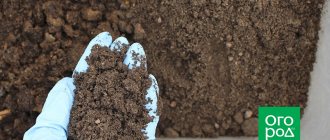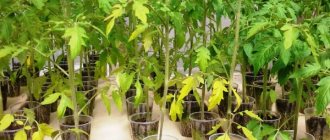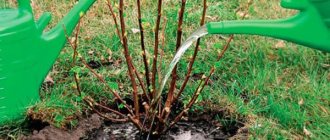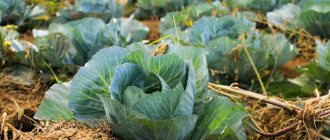Creating ideal conditions for growing seedlings is not always easy, so many summer residents are faced with the stretching (outgrowing) of seedlings. Why is this condition dangerous for plants?
Stretched sprouts are fragile and weak. They may not tolerate picking well, and if the plants are already large, subsequent replanting into the ground. Such seedlings take longer to take root in the garden than usual, are more often affected by pests and diseases, and often die.
Of course, all this cannot but affect the future harvest, so the health of the seedlings must be taken care of even at the stage of preparing the seeds for sowing. The most annoying thing is that even if you did everything correctly at the beginning, there is no guarantee that the seedlings will not begin to stretch. And all because there are many reasons that lead to this problem. Let's look at them in more detail to prevent the loss of seedlings in time.
Reason 1. Insufficient lighting
The most common reason that can spoil the quality of seedlings. If seedlings do not have enough light, they begin to reach for its source, weaken and become thinner. This problem is especially relevant for plants that sprouted at the end of winter and beginning of spring, when there is still not enough sun. It’s easy to help the seedlings: just buy a phytolamp and add additional light to the plants, taking into account that they need about 12-14 hours of light per day. In a dark room, only a phytolamp should be used.
Seedlings also need darkness, so you should not keep the phytolamp on for days, this will weaken the plants’ immunity.
Seedlings stretched out in too hot room
Once the seeds germinate, they respond to the heat by producing tall, thin stems before they have a chance to catch up. This results in elongated seedlings that become “all legs.” As soon as the seeds sprout, temperatures above +20C are no longer desirable.
One nice tip: touch the plants. YES! Sometimes you can save elongated plants by gently running your fingers over the tops every day. This simple movement imitates a light breeze and tricks the seedlings into thinking they need to grow thicker stems to withstand windy weather.
You can also install a fan near the seedlings for the same purpose. Just remember to keep an eye on your plants; with the fan running, the soil will dry out faster.
- Wondering when to start planting flowers? Our handy cheat sheet will help you understand when it’s time to sow seeds for seedlings.
- All basic sowing equipment is on this page.
- What to do if seedlings are damaged by black leg (lodging of seedlings) read our detailed material here >>>>>>
- Read about how to properly water seedlings here >>>>>>>>
- You can learn about why seedlings rot and how to avoid it from this material >>>>>>>>>>>
Reason 2. Violation of the timing of sowing seeds for seedlings
The sooner you start sowing, the greater the risk that the seedlings will begin to stretch before planting in the ground. Keep in mind that in favorable indoor conditions the seedlings will grow quite amicably. This means that it will not be easy for the plants to wait until the soil in the garden warms up and they begin to outgrow. Avoiding this problem is quite simple: follow the sowing period specified in the instructions for the seeds. If you collected the seed material yourself, consider when the seedlings will be ready for planting in the ground. For example, tomatoes are ready for the procedure in 50-60 days, peppers – 60-70 days, and cucumbers already 20-30 days after sowing.
Monitor weather conditions, study long-term forecasts, observe the climate in your region in order to determine the date of planting seedlings in the ground as accurately as possible.
Common mistakes
Among the mistakes of novice gardeners and gardeners are:
- Completely ignoring seedling care or following recommendations is the main mistake among novice gardeners and gardeners.
- Neglecting the preparation of seeds before planting, namely disinfection, calibration and other procedures.
- Arbitrary timing of planting seeds and subsequent planting of finished seedlings in open ground.
- Failure to comply with instructions for caring for the planted crop - the conditions for the growth of some crops are often very different from the requirements of another.
- Neglect of the quality of water for irrigation, as well as the quality of soil and fertilizing.
- Improper picking, thinning and pruning of sprouts.
- The desire to use certain varieties of a particular crop that is not adapted to local climatic conditions.
Reason 4. Late picking
This reason is related to the previous one. If you sowed in a common container, then in the phase of 1-2 true leaves, be sure to plant the seedlings in separate pots. This will allow them to stop fighting for vital resources and begin to increase green mass. If the picking is carried out late, then you will have to work with already elongated and weakened seedlings, which may not tolerate such a procedure.
- 3 ways to pick seedlings: detailed master class with photos
We tell you how to properly plant seedlings of tomatoes and other crops.
Reason 5: Unsuitable temperature
The air temperature in the room where the seedlings are located also affects its development. The higher it is, the faster the plant grows the above-ground part to the detriment of the root system. As a result, the crops look long and limp. To avoid this, keep the boxes with seedlings in a room with a temperature of 18-20°C. For cold-resistant crops it can be lowered to 13°C, for heat-loving crops it can be increased to 21°C. It is convenient to grow seedlings on an insulated balcony or loggia.
Protect seedlings from temperature changes that disrupt the nutrition of the roots.
- What should be the temperature for growing seedlings?
Why can’t cabbage and peppers be kept in the same room? Find out everything about the temperature for growing seedlings of your favorite plants.
Climate control
The most important indicator that determines the growth parameters of seedlings is the ambient temperature. In nature, temperature is closely interrelated with the level of illumination, which has formed a number of biological axioms in plants, the violation of which can lead to stretching of seedlings, stunting of growth and even death.
It is recommended to provide the ability to adjust the temperature at the location of the container with seedlings. The easiest way to make this adjustment is to place the plants in a cool room not far from a heater that is turned on at the right time. However, this procedure is complex and expensive, so it is better to simply transfer seedlings of most vegetable crops from a warm place to a cold one (for example, from a living room to a veranda or balcony).
For seedlings grown without additional lighting, the optimal daytime temperature will be +18...+24 C, night temperature - +12...+14 C. For seedlings that receive a lot of light throughout the day, the daytime temperature is maintained at +22...+28 C , at night they drop to +14…+20 C.
Temperature conditions for growing seedlings for open ground
An even more difficult factor to provide, measure and maintain is air humidity. Humidity is considered optimal in the range of 60-80%. Drying the air is an inevitable price to pay for using heaters, and the result is the accumulation of harmful salts in the plant, drying out and shedding of leaves. But overwatering can cause rotting of sprouts and disease.
You can control the humidity level without special equipment using the dry and wet thermometer method. Two control measurements are carried out with a mercury thermometer in dry and wet states, after which the humidity is determined using a reference table. As a rule, indoors and in the cold season it will be significantly lower than normal.
Take a regular thermometer to measure the air temperature. For example, the temperature in the room is 19 degrees. Moisten a handkerchief with water at room temperature and wrap 1 layer of wet cloth around the bottom of the thermometer. For example, it will show 17 degrees because evaporation causes cooling. The difference is 2 degrees. Use this table. In the left column are wet bulb readings. The top line shows the difference in the readings of dry and wet thermometers. Now we put them together (as in the Pythagorean table) and get the humidity. In this case 82%.
To increase air humidity, you can place a wet towel with one edge on a hot central heating radiator and the other in a container of water. All that remains is to periodically add water and control the humidity level.
An example of a simple air humidifier
How to get high-quality eggplant seedlings
In this article you will find detailed instructions, as well as expert advice on growing high-quality eggplant seedlings! We also recommend reading the article on how to properly collect tomato seeds for seedlings.
Reason 6. Improper watering of seedlings
Increased watering can also cause seedlings to stretch out. And if the room is too warm, the plants will quickly lose their healthy appearance. This increases the risk of leaf rot and wilting. How often should you water your plants? There is no clear rule here. It all depends on the condition of the soil and the seedlings themselves. Usually you should not allow it to dry out too much to prevent the roots from dying. The substrate should always be slightly moist, but not wet. You can check how dry the soil is with a wooden stick.
For watering, use fresh soft water with a temperature of at least 20°C.
- How to properly water seedlings on a windowsill, in a greenhouse and in the ground
Everything you wanted to know about watering vegetable seedlings.
Surgery
If you notice that the seedlings are beginning to stretch out, lose color and strength, do not despair - the situation can be corrected.
What to do if the seedlings are stretched out?
Correcting seedling growth consists of three main stages:
- growth arrest;
- analysis of conditions and identification of harmful factors;
- elimination of harmful effects and resumption of growth.
In order to temporarily delay the growth of seedlings until a harmful factor is identified, you need to reduce the number and intensity of watering, preventing the soil from completely drying out, and stop applying fertilizers. If the seedlings are older than 4 weeks, you can reduce the daytime temperature to +16 C; in young seedlings this can cause root rot. Do not stop supplementary lighting, illuminating the plants up to 16 hours a day.
To delay the growth of seedlings, you need to reduce the frequency and intensity of watering
After stopping growth, you should turn to reference literature, study the biological characteristics of the species, and analyze the compliance of the created conditions with the reference ones. Based on the conclusions drawn, it is necessary to quickly make adjustments to the life support system of seedlings.
Restarting the growth mechanisms (increasing temperature, frequency of watering, resuming fertilization) should be carried out gradually over several days, regularly monitoring the plants and monitoring the result.
Reason 7. Excessive feeding of seedlings
Do you think that feeding seedlings should be frequent and plentiful? This is not true. Increased fertilizing, especially with nitrogenous fertilizers, inevitably leads to overgrowth of seedlings and weakening of its immunity. Therefore, carry out the procedure according to schedule: every 7-10 days. You can start fertilizing a couple of days after picking.
Tomato seedlings are fed on average 4 times, peppers - 3 times, cabbage and cucumbers - 2 times.
- How to feed seedlings for good growth - the best folk remedies
Simple recipes for the health of your plants!
Reason 9. Poor soil quality
It’s not the most obvious reason for seedlings to pull out, but sometimes it can have an effect. Remember that the soil for seedlings should be loose, light and nutritious. Ordinary soil from a garden bed will not work, because... it contains pest larvae and pathogenic bacteria. It is best to purchase a ready-made substrate in a store or create a soil mixture yourself.
- Soil for seedlings - how to prepare the right mixture for young plants
Seedlings of tomatoes, peppers, eggplants, cucumbers and cabbage will be strong and healthy if grown in the correct substrate.











